
30 Dec What’s Causing The Pain On The Outside Of My Foot?

While arch and heel pain are commonly discussed in podiatry, pain on the outside edges of the feet is much less well-known – despite being equally as painful and frustrating for our patients.
To help those experiencing pain on the outer border of your foot, the podiatrists at Masterton Foot Clinic are sharing some of the many causes we see and treat. If you’d like more information on any of these conditions or how we treat them, get in touch! We’re always here to help.
Peroneal tendonitis
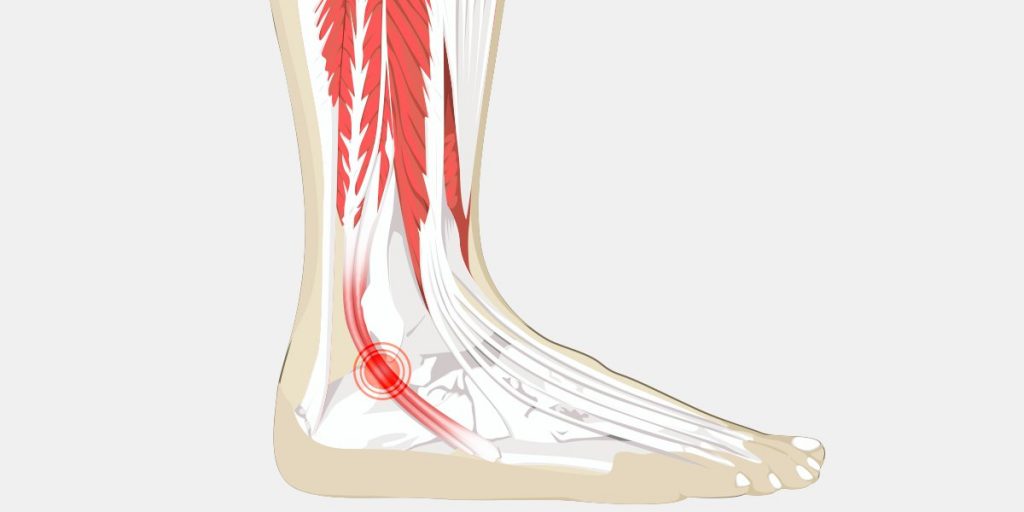 Your peroneal tendons run down the outside of your leg, crossing your outer ankle and moving down to the outer border of your foot. When the tendons are excessively strained, whether it’s a one-off event like an ankle sprain or repetitively over time due to the structure and function of the feet and legs, the tendons become damaged, leading to pain, sometimes inflammation, and degeneration.
Your peroneal tendons run down the outside of your leg, crossing your outer ankle and moving down to the outer border of your foot. When the tendons are excessively strained, whether it’s a one-off event like an ankle sprain or repetitively over time due to the structure and function of the feet and legs, the tendons become damaged, leading to pain, sometimes inflammation, and degeneration.
Pain is often felt around the outer ankle, especially when twisting the foot inwards or feeling behind or around the ‘bony bump’ at the outer ankle.

Iselin’s
Iselin’s only affects children as it is a type of growing pain at the feet. It occurs when a child’s growth plate on the outer edge of the mid-foot (where you can feel the bony bump) becomes irritated due to strain from the attaching ligaments. The biggest misconception about growing pains is that they cannot be treated and must be waited out until they resolve on their own. This is absolutely not the case and this is a complaint we often, and very successfully treat.
Stress or avulsion fracture
 Stress fractures occur from excess pressure and stress to a bone over time, forming micro-cracks that grow bigger as the pressure isn’t managed and offloaded. This pain tends to be gradual at first, feeling more like a niggle or dull ache, and progressing to a sharper and more intense pain as the injury worsens.
Stress fractures occur from excess pressure and stress to a bone over time, forming micro-cracks that grow bigger as the pressure isn’t managed and offloaded. This pain tends to be gradual at first, feeling more like a niggle or dull ache, and progressing to a sharper and more intense pain as the injury worsens.
In avulsion fractures, a small piece of bone is pulled off and separated due to the strain to an attaching tendon or ligament. The most common site for this to happen in the foot is at the fifth metatarsal, which is the bony bump you feel when you move your fingers along the outer border of your foot. These often occur alongside sprains and other traumatic injuries.
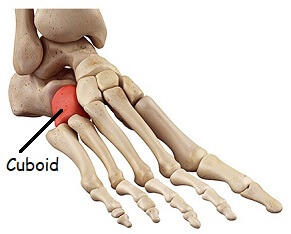 Cuboid syndrome
Cuboid syndrome
When your cuboid bone (pictured) moves out of place and alignment with the surrounding bones, it can cause ongoing pain in the area of the cuboid that can radiate up and down the foot. The pain tends to be worse when walking without good support from shoes or orthotics, especially over uneven ground. This condition often occurs together with ankle sprains.
Tailor’s bunion

Much like a bunion at the big toe, a tailor’s bunion is the change in the position and structure of the joint at the fifth toe on the outside of the foot. Tailor’s bunions may not cause any pain or symptoms initially, aside from the changing joint shape. Ultimately, the prominent joint position can change the weight distribution on the foot, leading to pain and other problems like corns and callus, as well as making it very difficult to fit footwear comfortably.
Arthritis

Arthritis affects the bones and joints of the feet – including those on the outer edge of the foot. While osteoarthritis is your typical ‘wear and tear’ arthritis that occurs over time that most often affects the big weight-bearing joints, they can and do affect the smaller joints in the feet, too.
Rheumatoid arthritis is an auto-immune arthritis where your own cells attack your joints and it results in a painful inflammatory process. This can create pain at the feet, including the outer edges.
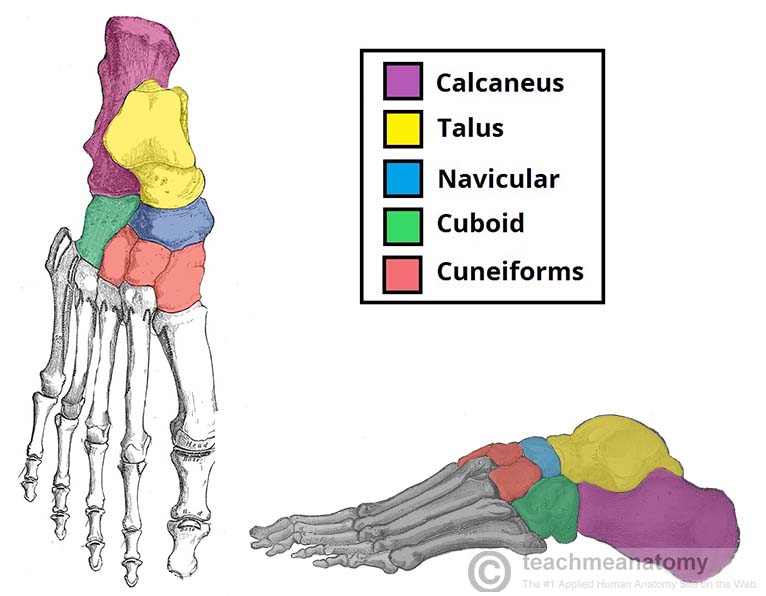 Tarsal coalition
Tarsal coalition
When two or more tarsal bones (pictured in colour) have an abnormal connection, this is known as tarsal coalition. The ‘connection’ may be made of cartilage, strong fibrous tissue, or bone. The result is more rigidity and less flexibility in the foot, which over time becomes painful and can make physical activity difficult. Tarsal coalitions are usually present from birth, though symptoms often remain undetected until adolescence.
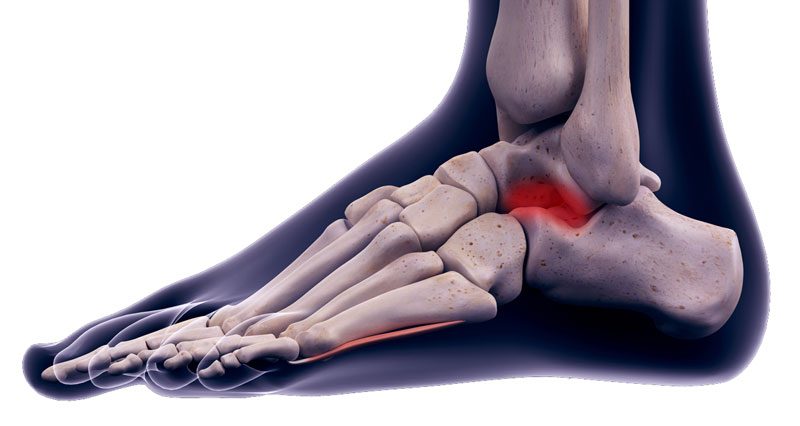 Sinus tarsi syndrome
Sinus tarsi syndrome
The sinus tarsi is a small canal on the outside of the ankle that can be injured by overusing or injuring the ankle like in an ankle sprain. The pain you feel isn’t so much on the border of the midfoot or forefoot as it is between the heel and ankle. If you’ve had repeated ankle sprain, you are more likely to have sinus tarsi syndrome.
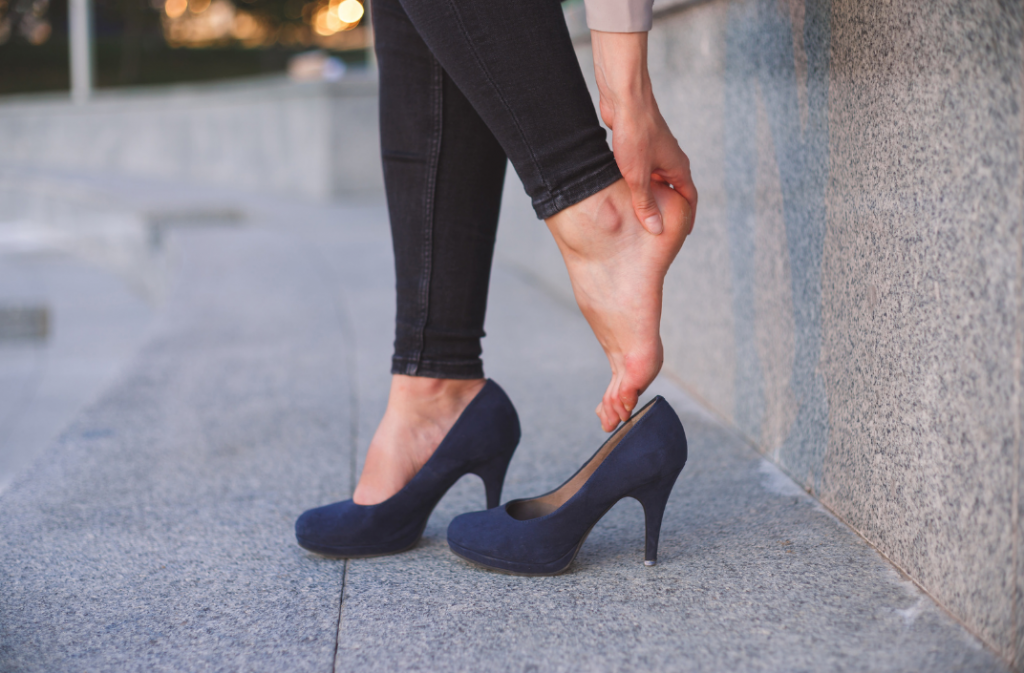 Corns, calluses or friction
Corns, calluses or friction
When you have excess rubbing or friction on the outside of your foot, corns and calluses can quickly arise. These can feel like walking on painful little pebbles, often occurring on the sides of the toes and joints. If you’re noticing the build-up of hard, dead skin on the sides of your feet, this is a problem we can simply and easily treat in one appointment to give you instant relief.
Experiencing burning, pins and needles, or numbness? Consider diabetes
Diabetes can also cause painful symptoms on the outside of the foot, alongside neural symptoms including numbness and tingling, pins and needles, burning pains, shooting pains and more. If you have diabetes and are experiencing any of these symptoms anywhere in your feet, come in and see our team.
Yes, there are a lot of causes of outer foot pain!
If there’s one thing that’s for sure, it’s that there are a lot of causes of pain along the outer edge of the feet – many more than we’ve listed here today. While it’s a great idea to start getting an understanding of what the problem could be, it’s more important to get a professional diagnosis so you can start implementing the right treatment.
Too often we see people trying to (unsuccessfully) treat the wrong problem, resulting in wasted time, money – and at times leading to the original problem worsening as it was never properly addressed and treated.
To book your appointment with our experienced podiatry team here in the Wairarapa, call us on 06 370 4057 or book your appointment online here.

Love our work?
Get to know the team behind it!
Click here.


